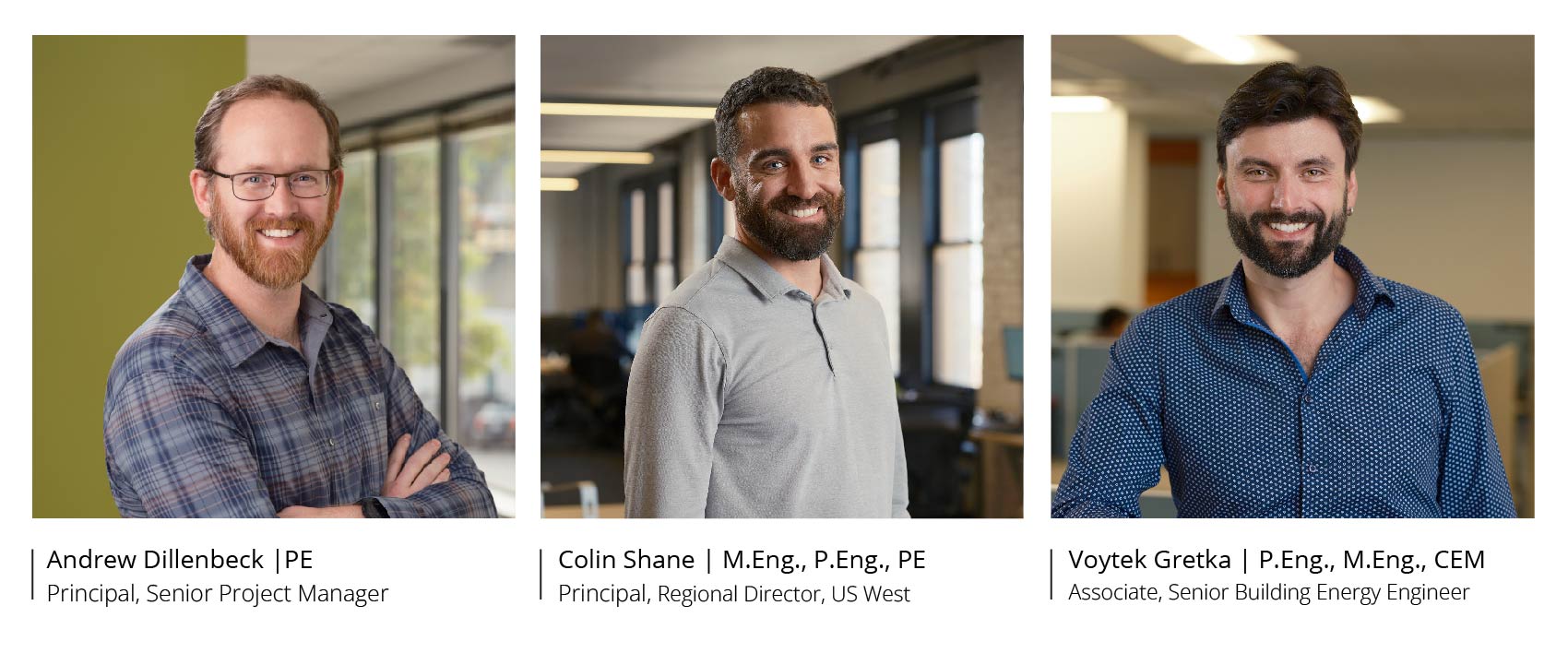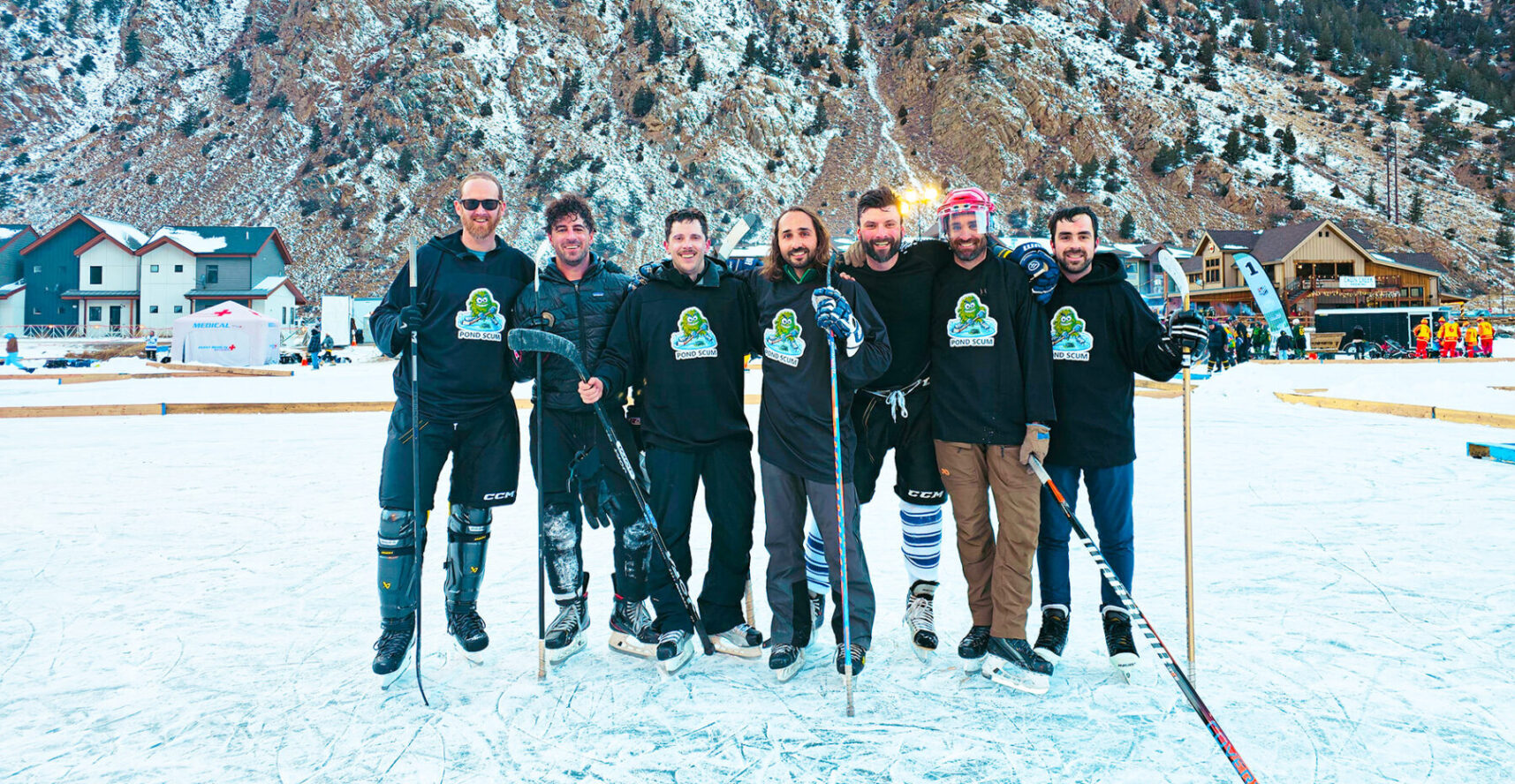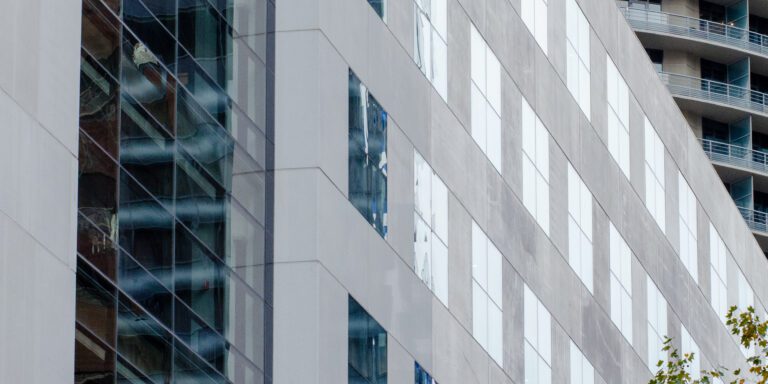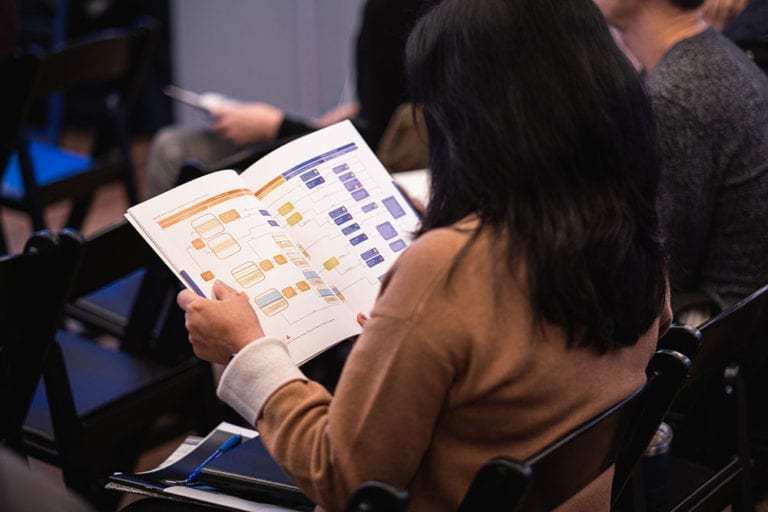It’s official! We’ve opened in Denver. Meet the team on the ground that was inspired to open an office and hear about the building enclosure and energy & climate work, new projects, and Colorado fun they’ve been up to.
Interview by RDH Communications Coordinator, Natalie Michaelis, with
NM: It’s great to be here with all of you! I know there’s been a flurry of activity opening the office, but we want to know about the types of projects you’re working on in Denver.
Andrew: We’re working on a range of projects in the building enclosure, climate, and energy realms. We’re currently the enclosure consultant on a large library project in the Denver area developed by Anythink Libraries that will serve the residents of Adams County. We’re helping a condominium association in Denver rehabilitate its aging terrace decks. We also have several active multifamily residential, single-family homes, and resort development projects in mountain towns throughout Colorado, Wyoming, and Montana.
NM: We provide building enclosure design, consulting, and commissioning services up and down the West Coast. What makes building science different in Colorado?
Andrew: Colorado covers four different climate zones, from semi-arid plains to extremely cold mountain climates. Each has differing demands regarding space conditioning, rain, wind, snow, ice, hail, and wildfires specific to local micro-climates. Our focus on the building science fundamentals of heat, air, water, and vapor control and our experience working in every climate zone in the US and Canada allows us to meet the needs of each project, no matter the location.
Colin: RDH has invested decades in working on socially impactful multifamily residential projects to expand access to affordable housing and equitable community resources to more families. We, along with our like-minded clients and partners, recognize the stress on individuals, families, and neighborhoods when living without the ability to shelter in place. Our team is committed and passionate about bringing what we’ve learned in developing these durable, comfortable housing solutions to Colorado.
NM: Colorado’s roadmap sounds ambitious, and we have an opportunity to make a big difference on projects here. Help us understand more about what you each specialize in.
Andrew: I am a building enclosure consultant specializing in high-performance facade, fenestration, roofing, waterproofing, mass timber, and panelized systems. I collaborate with our new and existing building clients to evaluate their project performance, budget, and schedule needs and recommend solutions for each project. I work closely with our energy and climate colleagues to integrate enclosure solutions to meet increasingly higher energy efficiency needs.
Voytek: I am a Building Performance Engineer specializing in whole-building energy simulations. My team studies the dynamic impact of enclosure, mechanical, & electrical designs. Our work as energy consultants is to advise clients on cost-effective designs that meet energy codes, achieve maximum LEED points, reduce utility operating costs, and/or mitigate operating or embodied carbon emissions. We also run multi-parametric models to advise on the impacts of higher-level building portfolios or jurisdictional codes & standards.
Beyond my technical day-to-day work, I like to be involved in a volunteer capacity and be engaged in my local community. I currently sit on the local ASHRAE Rocky Mountain Chapter Board of Governors and have memberships in Denver Metro BOMA and ULI Colorado where I’m exploring various committee opportunities.
Colin: I oversee our team throughout the Western US region and am excited to see the strengths Andrew and Voytek bring to Denver. We’re in an epicenter of climate innovation and this team has the skills to help universities, workplace facilities, and healthcare campuses through the transition to reduced energy consumption.
NM: What does it mean for our clients now that we have coupled Building Enclosure and Energy capabilities in Denver?
Colin: With the introduction of Building Enclosure and Energy capabilities in Denver, we are not just expanding our physical presence but enhancing our service portfolio. This move allows us to provide more holistic solutions to our clients, addressing not only their immediate needs of creating durable and cost-effective buildings but also aligning with rapidly evolving sustainability goals related to embodied and operational carbon. We’ve witnessed tremendous success in other markets where this model has been implemented, presenting client satisfaction and new business opportunities.
NM: Energize Denver positions existing building owners first in line to address Colorado’s energy goals. Knowing where to start can be overwhelming, do you have any advice for building owners getting started in the process?
Voytek: Collect and analyze your building data to understand where it stands relative to local and state energy performance requirements. Benchmarked performance studied against seasonal energy consumption profiles identifies opportunities for improvement.
Commissioning and recommissioning buildings keeps them running optimally. There are instances where physical assets of the building don’t need any upgrading to improve efficiency, but a simple change of temperature setpoints or mechanical system or lighting schedules in the building automation system (BAS) can be very impactful. Ultimately, I think that simple and elegant designs are easiest to operate efficiently long-term – start by having these kinds of conversations with your service providers and/or engineers.
NM: Any insight into what the energy landscape will look like in 5 years for Denver? For Colorado?
Voytek: We want to see governments and policymakers incentivize the conversion of vacant office and commercial buildings into critically needed housing. By repurposing empty buildings for viable new uses and modern functions, we have a real opportunity to make an impact on the housing crisis. If you’re asking what Colorado’s reality might look like in five years, we sure hope that changemakers and disruptors are mobilizing to make this a reality.
NM: Your professional interests in Denver seem to have a deep connection to the community and region. What brought each of you to Denver in the first place?
Andrew: My wife had a teaching opportunity at her alma mater, Colorado State University, and there was a growth opportunity here for RDH. We didn’t start with plans to open an office, but it was the obvious next step as we continue to engage with the industry and clients locally.
Colin: Colorado’s lifestyle and outdoor activities were big factors. My wife and I have spent lots of time in Denver and RDH has always been present in the area. For years, we have been supporting clients across the country from our offices on the coast. Denver allows us to deepen and grow those relationships with clients throughout Colorado and the surrounding areas.
Voytek: Colorado is an exciting place to be right now for low-energy innovation, design, and engineering. Education is a big aspect of what sets RDH apart, I’m excited to build something from scratch here in Denver with Colin and Andrew, backed by a tremendous wealth of knowledge and experts across our other offices.
Team hockey game in Georgetown | From left to right: Andrew Dillenbeck (DEN), friend, Cameron Chorney (PDX), Kurt Weninger (OAK), Voytek Gretka (DEN), Colin Shane (DEN), Matthew Bowman (OAK)




